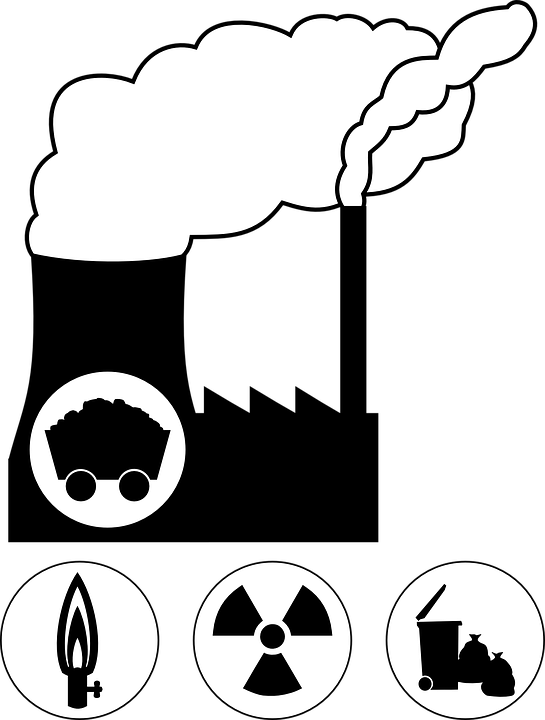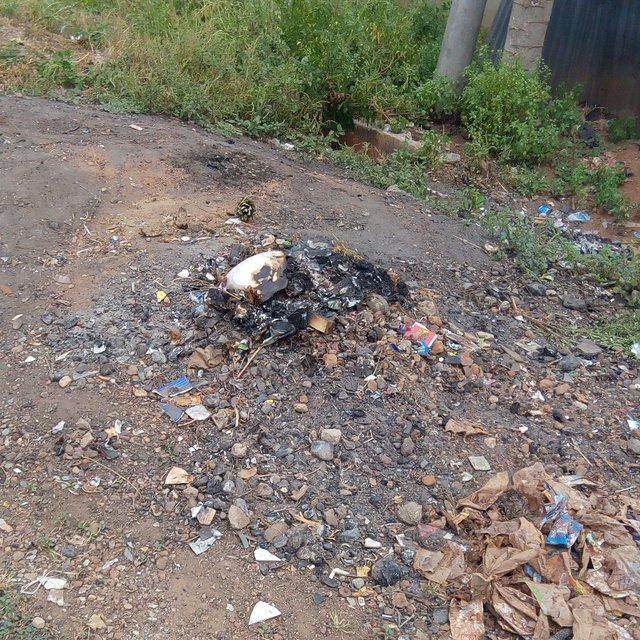Plasma gasification: turning waste into energy without hurting the environment.
We are in the 21st century, a time when technology has taken a huge leap and is gradually shaping and influencing the future of our world by the minute. Here and there, new discoveries and inventions surface and give humanity hope of a better future. The internet has revolutionalised (if there is a word like that) our lives and brought us to the realization of the benefits of its use. Coupled with ground breaking technology, the human race is rather unstoppable (sorry Martians, we are way ahead)
However, It is quite sad and ironic to say that we live in a world that is gradually being destroyed by its inhabitants (this could make the Martians happy). The number one concern of everyone in the world right now is the increasing danger that the greenhouse gases and pollution pose to human health, existence and the life expectation. The earth is gradually warming up and the environment is gradually getting filled with trash.

image source: pixabay under cc0 license
According to the United States Environmental Protection Agency (EPA), Worldwide, net emissions of greenhouse gases from human activities increased by 35 percent from 1990 to 2010 and according to this report, the temperature of the earth was warmer than in the 20th century by about 0.94 Celcius degrees. The World Health Organization (WHO) states that polluted environments causes up to 1.7 Million child deaths a year.
These statistics and a lot more are the proof of the bad effects of greenhouse gases and pollution on the earth and if they are not checked, the effects could be worse in the future.
In order to reduce the danger posed by greenhouse gases, new technology have presented alternatives to fossil fuels which are the number one culprits in the emission of these gases. In the case of pollution, the large scale methods employed are land filling and incineration which do not totally eradicate the menace of pollution. Land filling doesn’t stop the release of certain greenhouse gases that are trapped in the waste and incineration or locally burning involves the release of greenhouse gases and there we are again, a problem leading to another.
Although measures such as recycling and biomass production have helped to some extent, there is still a whole lot of issues concerning greenhouse gases and pollution. How then can these issues be put to check without using one problem to create another? Here comes the method of waste management known as plasma gasification. But first, before I dive into the details of this method, I would like to talk briefly about the form of matter that is used in this process – plasma!
THE FOURTH STATE OF MATTER
Plasma is not a new word generally but to different categories of people, it means different things. For instance, a biologist or a medical personnel will refer to it as the component of blood, to a mineralogist, it would be a type of stone. To people that use gadgets and display devices, it is a type of screen technology. Well, all these are not the plasma I want to talk about.
When I was younger, in elementary school, we were taught that there are three forms of matter – solid, liquid and gas. But quite recently, I have learnt that there is a fourth state of matter – plasma.
Plasma as a state of matter is quite distinct from the other states and does not exist naturally in our earth but it is extensively the form of matter that our universe is made of. The sun and stars for example are made of plasma. The lightening we see on a rainy stormy day and the beautiful aurora are also a display of plasma.
Plasma is a state of matter that is similar to gas but not the same as a gas. The similarity between plasma and gas is the fact that they both do not have a definite shape and volume and thus they take the shape and fill the containing vessel.
Sometimes, plasma can be regarded to as ionized gas.
Just like a gas, plasma is of no fixed shape but unlike gas, its atoms are totally or (almost totally) stripped of the electrons and thus the ions (positively charged) are made to roam freely in the atom alongside the electrons simply making it a charged piece of matter. This charged state is in contrast to the other forms of matter where the atoms contain equal number of positive and negative ions which cancel themselves out and make them neutrally charged (did I just say “neutrally charged”? well, I expect you to get the gist.)
However, the existence of charges in this state of matter make them able to conduct electricity and also as a result of the relationship between electricity and magnetism, they are affected by electromagnetism (very differently from gases). This property of plasma makes it very unique and amazingly useful for various applications and research purposes.
How then does plasma come to be?
Recall I stated that plasma does not exist naturally in the earth surface. However, plasma can be and has been artificially created by applying extreme heat or passing an electric charge through a gas. Outside our earth, plasma exists naturally and is abundant in the universe.
Devices such as neon lighting, fluorescent bulb, plasma TVs and the likes all have plasma in them. This is done by passing a very high voltage through the gas in the chamber (neon bulb or fluorescent) which knocks the electrons from the atoms and thus creating plasma and there you would have some light glowing. The method of knocking the electrons off or freeing them from the atoms is known as ionization.
Basic science teaches us that when solid is heated, it turns to liquid i.e. it dissolves and upon further heating, it turns to gas i.e. vaporizes. Well, that is not the end of the cycle as further heating of the gas would (could) result in the formation of plasma i.e. ionization (a few of us need to update our knowledge of basic science).
Depending on the conditions used to ionize the gas, the plasma produced can be at extremely high temperatures (just like the sun) and for the sake of this post, we are interested on the heat generated from the plasma.
PLASMA FOR WASTE MANAGEMENT
Over the years, plasma has been used for many processes such as home lighting (neon lighting), welding and cutting of materials (plasma torch and plasma arc) and display (TVs) among others and quite recently, it has been applied to waste management.
Municipal Solid Waste (MSW) is daily being produced in all parts of the world and the means of waste management available have not been sufficient to effectively manage and prevent pollution or the release of greenhouse gases. I would like to explore two common types of waste management which have not really solved the problem of waste management without creating another one.
LAND FILLING
Land filling is a method of waste management in which the waste is taken to an open place or a big ditch where it would be dumped and heaped. This method is widely used in the world and is usually prone to abuse.
The waste in the land could also release harmful chemicals that can leach into the soil and destroy the soil and/or water causing the death of organisms and animals. The waste can also be acted on by bacteria which would influence the release of greenhouse gases – and the cycle of problems starts again.
In my country, land filling has become such a menace to the extent that any piece of land that is not occupied by a house or farm land can be turned to a land fill overnight. The picture beside is an example of a land owner trying to stop people from turning his land into a land fill. (P.S no one actually pays or requests for the fine but that is enough to scare people away).
INCINERATION
This is a method is also a widely used method of waste management which involve burning of the waste. Incineration is done both in the large scale (government owned incineration plants) and the small scale (personal burning of waste). The small scale methods are mostly practiced here in Nigeria.
Burning of waste causes the release of greenhouse gases that in return harm the environment.
Although incineration is not illegal burning and the release of greenhouse gases is somewhat controlled, it still produces ash (bottom ash or fly ash) that is harmful to the environment if it leaches into the soil or water body.
You might want to say that my analysis of these two methods of waste management is bias as I only highlighted their negative disadvantages but well, I am simply trying to say the truth to drive my point home. Here I am presenting to you a method of waste management that does not involve the release of greenhouse gases or have any effect on the environment. In fact, it is a method whose waste products are re-used and are safe.
PLASMA GASIFICATION
Plasma gasification is a method which involves the use of hot plasma to process organic (and in organic) matter and convert it into a gas which is cleaner and environmental free. The extreme heat gotten from the hot plasma is able to vaporize the organic matter and thus split into its constituent elements.
The method of plasma gasification can be used to treat waste such as organic, solid and biomedical or even nuclear waste as it totally turns the material into its constituent elements and thus destroying any toxic or poisonous constituent in it. The process is done in a chamber with little or no oxygen therefore the harmful oxides that are formed
by burning of waste cannot be formed.
This process was used predominantly in time past to destroy hazardous waste such as nuclear war heads, chemical weapons etc. when these materials are taken through plasma gasification, the product is usually slag that is non-hazardous as the heat would have successfully destroyed by the heat. Over time, plasma gasification is being employed in the destruction of waste materials in a bid to improve the management of waste to ensure greener environment.
Plasma gasification of waste produces two distinct products; syngas and slag. Syngas is produced by the vaporization of organic matter which is a type of fuel that is made of majorly carbon monoxide CO and Hydrogen (H2) and is an ecofriendly fuel which can be used for power generation. On the other hand, the in organic materials melts and comes off as slag which can be used in road making and other industrial applications. The slag is also non-toxic.
HOW PLASMA GASIFICATION IS DONE
Plasma gasification is done in a plant known as the plasma gasifier and employs the use of several plasma torches to do the heating.
The plasma torches are usually electric arcs which are made of copper, tungsten zirconium or hafnium electrodes through which a high electric current is passed. When the electric current is passed through the electrodes, the plasma arc is formed and ionizes an inert gas (Argon or Hydrogen) that is introduced to it. The plasma formed is usually of a very high temperature ranging from about 4000 to 25000oF (imagine that kind of heat). At this kind of temperatures, the molecular bonds in the organic matter are broken and are reduced to the individual constituent atoms and also melt the inorganic matter.
The Municipal Solid Waste is first sorted to remove the recyclable materials such as paper, glass and some metals after which the waste is then shredded into smaller particles and dried. This is done to enable easy dissociation and vaporization.
The sorted and shredded waste is then fed into the gasifier where it is processed as a result of the heat from the plama and the products – syngas and slag are recovered. The more the organic waste, the more syngas is produced and same goes for the inorganic waste and slag. The chamber where the waste is introduced into is air tight with little or no oxygen. The absence of oxygen prevents the formation of harmful gases such as oxides.
The slag is collected and cooled and can further be processed into granulated for use in various processes including road construction or production of roofing materials. The slag is chemically inert and non-toxic. The syngas product is also collected into chambers where it is further treated and heat can be recovered for use in plants such as steam plants for energy generation.
The syngas is also a very volatile fuel that can also be used for the production of electricity. This electricity produced can be used to power the gasification plant thus, conserving energy and ensuring a safe and green environment.
Although the initial investment and startup cost of plasma gasification is higher, the use of the process for the management of waste has numerous advantages over the conventional means of waste management. Advantages such as;
- It enables the total (and safe) destruction of hazardous waste
- It produces an ecofriendly gas that can be used in power generation thus, improving the conservation of energy.
- There are no emissions of toxic gases therefore ensuring a greener environment
- The solid by-products can be used for road construction and is non toxic
- It eliminates the need for land filling and thus reduces the cost of waste management
- The process is easy to implement and economical on the large scale
Plasma gasification is a method which can in the nearest future eradicate the knowm methods of waste management. Solid municipal waste can be recovered from the land fills and processed in the gasifier. that way, the land fills are gradually depleted and the need for incineration is reduced.
PLASMA GASIFICATION (image created by me)
CONCLUSION
Although the process has not acquired global implementation, the places where plasma gasification are implemented have proved that the process applied to waste management is very feasible and economical. It also help to attain a greener environment in contrast to the two common types of waste management.
In my country, if this method is implemented, it would be able to solve the nagging problem of power generation while also stripping our environment pollution and also ensuring a cleaner environment. From this, I can conclude that the process of plasma gasification of waste materials has a 3 in 1 benefits and should be employed.
With time, I am sure that processes and technologies that would further aid and enhancethe gasification process would be discovered and if applied on a larger scale, the world would be a safer and more fun place to live in and I would probably reconsider my decision to elope to mars in the nearest future.
Thank you for reading my blog, please give me feedback via the comment section. See you next time.
REFERENCES
1. Plasma
2. Plasma: the fourth state of matter
3. States of matter
4. Plasma gasification and its advantages
5. Plasma gasification
6. Plasma
7. plasma gasification
If you write STEM related content, (Science, Technology, Engineering, and Mathematics) consider joining #steemSTEM on discord here. If you are from Nigeria, you may also include the #stemng tag in your post. You can visit this blog by @stemng for more details.





The world is advancing towards cleaner and safer energy sources day by day. Though I've heard about Biogas/Biomass power generation, using plasma to produce green energy is kind of new tech to me. As u stated on ur article, the waste is converted into syngas with the help of plasma torches and then the syngas can be used to produce electricity.
I think the process has similarity with the 'Biomass generation' system. The usage of plasma torches are the biggest difference between them, i guess. Hope u will also agree with me.
Anywasy, good article man. Cheers!
Yes the process is similar to biomass generation. It has also been used to generate syngas from biomass, coal and similar products... All in a bid to create clean energy.
Very nice of you to read my blog. Doing this on other stem posts will really help you in your writing.
Welcome!
Thanks a lot, man.
I'm trying to learn and adapt the way of writing blogs here, thanks for the support. :)
I really like the idea. However, following the usual "there is no free lunch" paradigm, how much energy is employed by the plasma gasification plants? Is it really that green?
PS: there are much more than just 4 states of matter. You can take glasses for instance ;)
You would agree with me that there is no perfect system so i wouldn't vouch for it being 100% green but compared to the other methods, it si green.
While researching for this post, i learnt there are actually seven but i wouldn't want to "overdose" my readers.
I expected people like you to point that out.
Thanks for dropping by!
Then one should say greener instead ;)
Actually, I think we have many many sort of glasses. But this stands indeed at the level of the nasty detail :)
This is the first time I am reading about the plasma gasification. Its a step to a green world. It wouldn't be so bad if it were used in Nigeria at least all our waste would finally give us light.
Yeah it would be nice if this was adopted. It would help solve a whole lot of problems in one way.
The problems with landfilling and incineration are particularly bad when they are unregulated and/or there are not a lot of technical controls. That seems to be a lot of the issue with the local sites you described.
Is there anything specific about gasification that makes it technically easier to adopt than a well-controlled incinerator or lined landfill?
Well, it is quite easy to implement but not as simple as the incinerator or landfill.
However, the economic advantages of production of a fuel and re usable byproducts coupled with the environmental impact makes it a welcome system and it would be preferred above them
We have to find new ways to produce clean energy, this is a very nice step towards a greener earth. I will drop something of this type in days to come.
It's nice to see that people are aware of our global warming problem. Let's continue spreading the green gospel.
You did well on this, thumbs up bro.
Yeah the green gospel must be spread. I am so interested in this method because of the benefits it presents.
Thanks for dropping by
You are welcome bro
Beautiful insight into the concept, sustainable environment is the goal. Thanks for sharing
I like the cleaner process, so there is no smoke given off during the process? I think we need this to take care of all these pure water sachets lying around everywhere.
The gas released is syngas and it is not released into the atmosphere.
Yeah those nylon bags need to be dealt with but they can be recycled instead.
The plastic scavengers can only do so much; I think we need more recycling awareness or even provide a sort of monetary incentive if you bring some of your used plastic waste to a collection point.
Day by day, the world is going green.
Thanks for sharing.
Green is safe. Green is the best!
Green is bae...lol
Eye opening. Let's go green! Thanks for sharing!
Any source of energy that is eco-friendly to the (ozone layer) is what the earth and also what our beloved country needs right now. Nice job on this bro.
I hope this news you've written is well spread. So has to implement it in strengthening our source of power supply in this nation